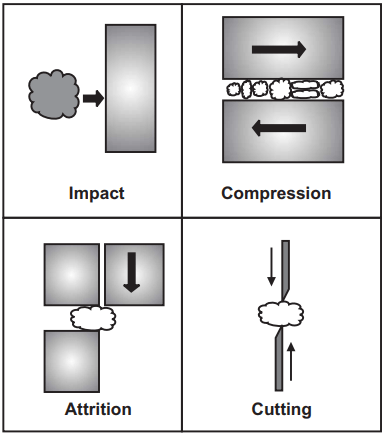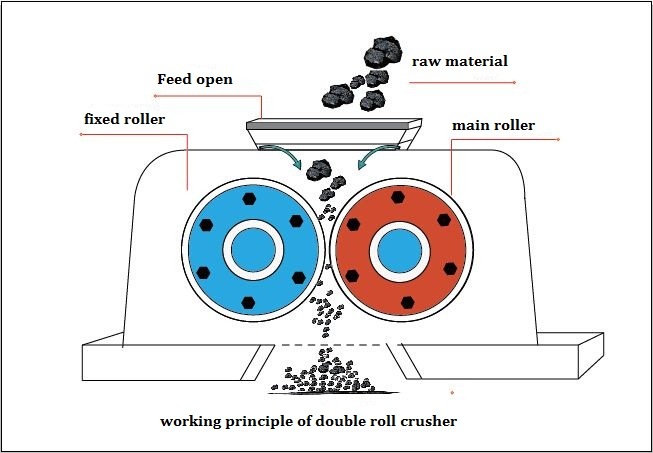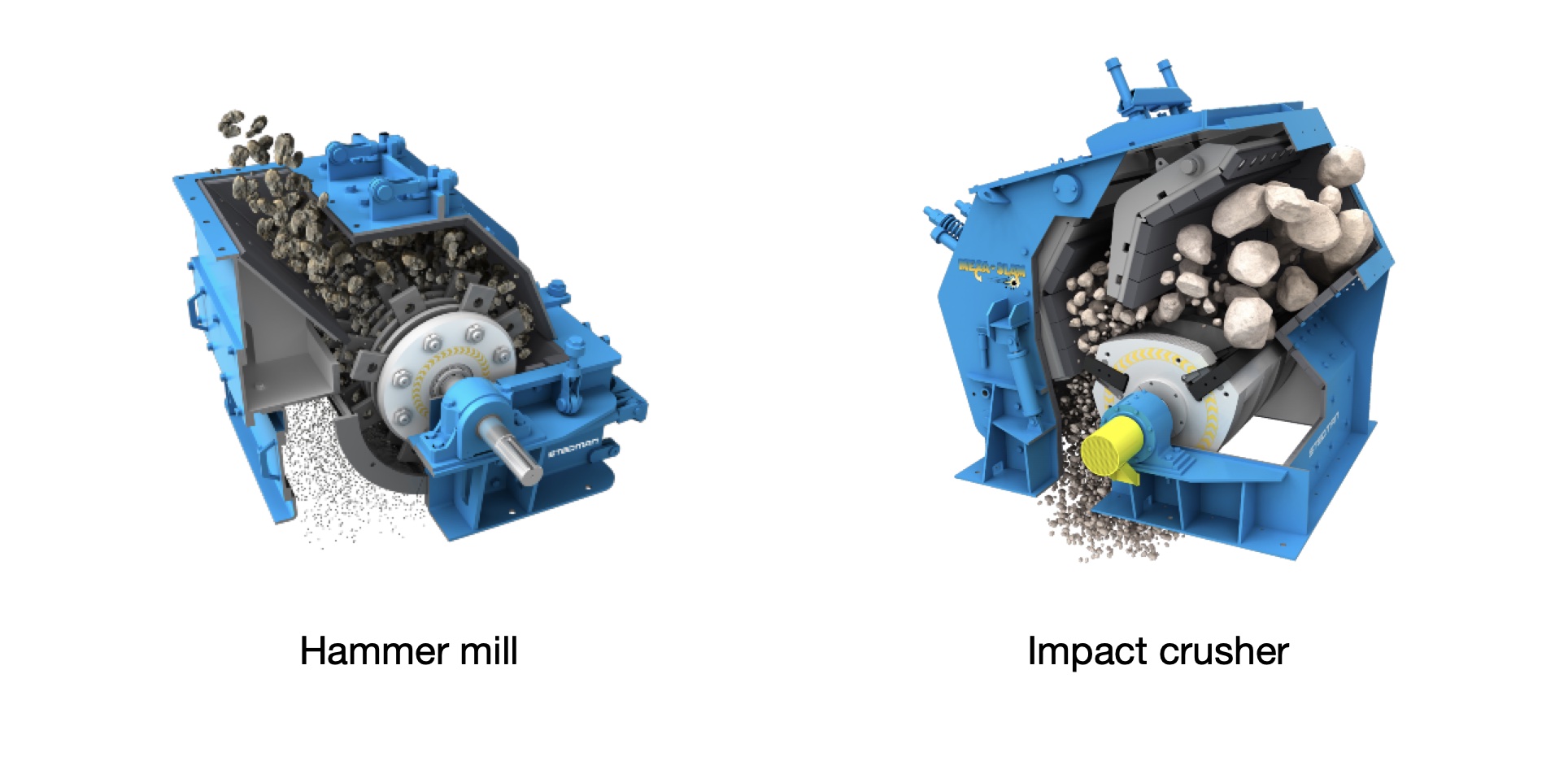What is a crusher?
Before we discover all the different types of crushers - we need to know what a crusher is and what it is used for. A crusher is a machine that reduces large rocks into smaller rocks, gravel, or rock dust. Crushers are mainly used in the mining and construction industries, where they are used to break down very large rocks and boulders into smaller pieces. Crushers are also commonly used for jobs like breaking up asphalt for roadwork or demolition projects. Crusher machines come in a wide variety of sizes and capacities, from small jaw crushers that cost the same as a new truck to extra large cone crushers that cost millions of dollars. With all this choice you'll want to make sure that the one you choose has the power and capabilities necessary for your specific project. In most cases, having a crusher at your disposal can save a significant amount of time and labor since you won't have to do as much manually crushing materials yourself. This makes them an invaluable asset for anyone who may need to crush materials quickly and efficiently.
Brief history of crushers
The first United States patent for a rock crushing machine was in 1830. Its key technology was the drop hammer concept, found in the well-known stamp mill, which would be repeatedly linked to the golden age of mining. Ten years later, another U.S. patent was issued to an impact crusher. The primitive impact crusher was made up of a wooden box, cylindrical wooden drum, with iron hammers fastened to it. While both of these patents were granted, neither creator ever marketed their inventions.
Eli Whitney Blake invented, patented, and sold the first actual rock crusher in 1858, it was known as the Blake Jaw Crusher. Blake’s crusher was so influential that today’s models are still compared to his original designs. This is because the Blake Jaw Crusher integrated a key mechanical principle – the toggle linkage – a concept students of mechanics are familiar with.
In 1881, Philetus W. Gates received a U.S. patent for his device featuring the basic ideas of today’s gyratory crushers. In 1883 Mr. Blake challenged Mr. Gates to crush 9 cubic yards of stone in a contest to see which crusher would finish the job faster. The Gates crusher completed the task 40 minutes sooner!
The Gates’ gyratory crushers were preferred by the mining industry for almost two decades until the turn of the century, circa 1910, when Blake’s jaw crushers saw a resurgence in popularity. The demand for large-mouthed jaw crushers skyrocketed as the industry began to understand their potential as primary crushers in rock quarries. Through Thomas A. Edison’s research and development, giant machines were innovated and placed around the United States. Smaller-sized jaw crushers were also developed as secondary and tertiary crushers.
Edison’s studies within the field of mining and crushing left a legacy that forever improved how large rocks and materials are reduced.
Crushing is the process of reducing or breaking down larger-sized material into smaller-sized material. There are four basic ways to crush.

Impact: Instant collisions of large objects against one another with material placed between. Both objects can be in motion or one can be still while the other strikes against it. There are two main types of impact reduction, gravity and dynamic.
Attrition: Rubbing the material between two solid surfaces. This is an appropriate method when reducing less abrasive materials because it consumes less power during the process. Robust materials would not be as efficient.
Shear: Typically combined with other reduction methods, shearing uses a trimming method and is used when a coarse outcome is wanted. This reduction method is often seen in primary crushing.
Compression: A key mechanical element of jaw crushers, compression reduces materials between two surfaces. Great for very hard, abrasive materials that do not fit attrition crushers. Compression is unsuitable for anything tacky or gummy.
Choosing the correct type of crushing method is unique to both the type of material you are breaking down and desired product. Next, you must decide which type of crusher is best suited for the job. Keeping energy usage and efficiency in mind is always a top consideration. Using the wrong type of crusher can lead to costly delays and consume more power than expected during the process.
What are the different kinds of crushers?
There are lots of different kinds of crushers from jaw crushers to impactors and cone crushers. Crushing is an versatile process and the kind of crusher you need depends on the 'stage' of crushing. The three main stages of crushing are primary, secondary, and tertiary - all of which have their own unique benefits. Primary crushing involves using a large object as the initial force to break down very large and hard rocks and boulders into smaller pieces before they move onto the secondary stage. Secondary crushing breaks down materials even further before they go to tertiary level, which makes an even finer product that can then be used in various industrial projects. Each type of crusher for each specific crushing stage is explained in greater detail below.
Primary crushing equipment
As the name suggests, this kind of crushing is the first in the process. Run of Mine (ROM) materials are brought directly from blasting projects and crushed a primary crusher for the first round of crushing. At this point, the material receives its first reduction in size from its raw state. Primary crushing produces materials ranging from 50" to 20" on average. The two main types of primary crushers are:
Jaw crushers
Large amounts of material are fed into the “V-shaped” jaw of this crusher and are reduced using compressive force. One side of the V remains stationary while the other side of the V swings against it. The material is forced from the wide opening of the V to the narrowest point of the V creating a crushing motion. Jaw crushers are large-scale, heavy-duty machinery typically constructed with cast iron and/or steel. Often considered a basic machine, jaw crushers have their place in the industry. They are often used to reduce rock into non-uniformed gravel.
Gyratory crushers
Run of mine material is transferred into a gyratory crusher’s upper-level hopper. The walls of the gyratory crusher’s hopper are lined with “V-shaped” pieces, the mantle and the concave, like a jaw crusher but shaped like a cone. The ore is discharged through the smaller bottom output hole of the cone. While the cone does not move, an interior crushing movement is created by a revolving shaft on a vertical rod. Continuous action is created making it faster than the jaw crusher with less power usage. Often smaller and more expensive than a jaw crusher, gyratory crushers are suitable for larger amounts of materials when a more uniform shape is desire
Secondary crushing equipment
After materials go though their first round of crushing, they are fed into a secondary crusher to be broken down further. The average input size for a secondary crusher ranges from 13" to 4" during this stage. Secondary crushing is especially important for making graded material that is going on to be used on government projects. For example crushed material for road base and fill. The main kinds of crushing machines for secondary processing are discussed below.
Cone crushers
Cone crushers are one of the main choices for secondary crushing. A cone crusher is a powerful machine that is used in large-scale industries for crushing various types of materials into smaller sizes. It works by applying pressure onto the material and squeezing it against a rotating mantle to create compression and force. The crushed material is first broken down at the top of the cone where they then fall down into a lower part of the cone that is more narrow. At this point the cone crusher crushes the material again into an even smaller size. This continues until the material is small enough to fall out of the bottom opening. Material from a cone crusher can be used for lots of different projects including road base on construction projects, asphalt pavement resurfacing, or in gravel pits for road construction. Cone crushers are suitable for medium-hard and hard materials - like virgin rock from quarries.
Roller crushers
A roller crusher reduces material by compressing it between two turning cylinders, parallel to each other. The cylinders are mounted horizontally with one resting on strong springs and the other framed permanently. Material is then fed between the two. Changing the distance between the rollers allows you to control the desired material output size. Each cylinder is easily adjusted and lined with manganese for maximum long-term wear. Roller crushers typically deliver fine material output and are not suitable for hard or abrasive materials.

Hammer mills and impact crushers
One of the most versatile crushers available, hammer mills and impactors can be primary, secondary, and tertiary crushers. Hammer mill crushers use continuous hammer blows to shatter and disintegrate material. They are typically horizontal rotating in an enclosed cylinder casing. The hammers are attached to a disk and swing with centrifugal force against the casing. Material is fed into the top and crushed the falls through the hole at the bottom. You will find hammer mills being used in industries like agriculture, medical, energy, and beyond. They provide some of the highest-efficiency outputs available, are portable, and can handle almost any material.
Impact crushers have a very similar working principle except instead of the rotating parts hitting the material like a hammer, they instead throw the material against an impact plate which breaks it down. They also come in horizontal or vertical shaft configurations depending on the desired output.

Post time: Feb-02-2024
